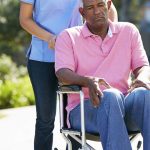 Immersive video games have become increasingly powerful, and while some have emerged to help us exercise or learn new skills, it’s perhaps fair to say that the majority remain only for entertainment purposes. Research from the University of Missouri School of Health Professions shows how such games can be extremely powerful when it comes to helping patients recover from stroke, however.
Immersive video games have become increasingly powerful, and while some have emerged to help us exercise or learn new skills, it’s perhaps fair to say that the majority remain only for entertainment purposes. Research from the University of Missouri School of Health Professions shows how such games can be extremely powerful when it comes to helping patients recover from stroke, however.
The study shows how motion-sensor video games can be used to help improve the motor skills and affected arm movements of stroke recovery patients from the comfort of their homes.
Stroke recovery
Stroke patients often lose the feeling in an arm, or at least experience some form of reduced movement or weakness, which can inhibit their ability to complete normal daily activities. As such, they will often undergo rehabilitation therapy, but this can often be extremely time-consuming and intensive, while also being inconvenient for rural patients due to the travel time involved in attending appointments.
The team developed a game-based therapy called Recovery Rapids, and playing the game led to similarly improved outcomes as if in-person therapy, such as constraint-induced therapy, was performed. The key, however, is that these results only required 20% of the time taken by in-person therapy.
“As an occupational therapist, I have seen patients from rural areas drive more than an hour to come to an in-person clinic three to four days a week, where the rehab is very intensive, taking three to four hours per session, and the therapist must be there the whole time,” one of the researchers explains.
“With this new at-home gaming approach, we are cutting costs for the patient and reducing time for the therapist while still improving convenience and overall health outcomes, so it’s a win-win. By saving time for the therapists, we can also now serve more patients and make a broader impact on our communities.”
Better rehab
What’s more, when patients are given traditional rehab exercises to perform at home, they’re often pretty monotonous and tedious, which can affect adherence. By contrast, the game makes the process more enjoyable and entertaining, which encourages patients to keep up with their exercises.
“The patient is virtually placed in a kayak, and as they go down the river, they perform arm motions simulating paddling, rowing, scooping up trash, swaying from side to side to steer, and reaching overhead to clear out spider webs and bats, so it’s making the exercises fun,” the researchers explain.
“As they progress, the challenges get harder, and we conduct check-ins with the participants via telehealth to adjust goals, provide feedback and discuss the daily activities they want to resume as they improve.”
There are around 800,000 Americans suffering from strokes each year, with around two-thirds of these reporting reductions in mobility, and subsequently a reduction in their daily activities, as a result. If games like these can help those people to regain their normal mobility as soon as possible, it must be a positive outcome, especially if it can be done while saving time and money at the same time.